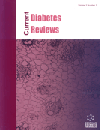
Full text loading...
Cardiovascular complications are a primary focus in the clinical management of type 2 diabetes, as they are the leading causes of disability and mortality in individuals with diabetes. Insulin resistance and endothelial dysfunction commonly coexist in diabetic patients. An increasing body of research indicates a reciprocal and interconnected association between endothelial function and insulin resistance. Insulin resistance can manifest in two distinct forms: endothelial and metabolic, with the former predominantly affecting vascular endothelial cells and the latter primarily impacting peripheral cells. The understanding of endothelial insulin resistance is crucial in comprehending the pathophysiology of cardiovascular complications in type 2 diabetes. Hence, the objective of this study is to examine the correlations, interplays, and molecular pathways linking endothelial insulin resistance and metabolic insulin resistance, with the aim of offering novel insights and scholarly resources for the prevention and management of diabetic vascular complications.

Article metrics loading...

Full text loading...
References


Data & Media loading...

